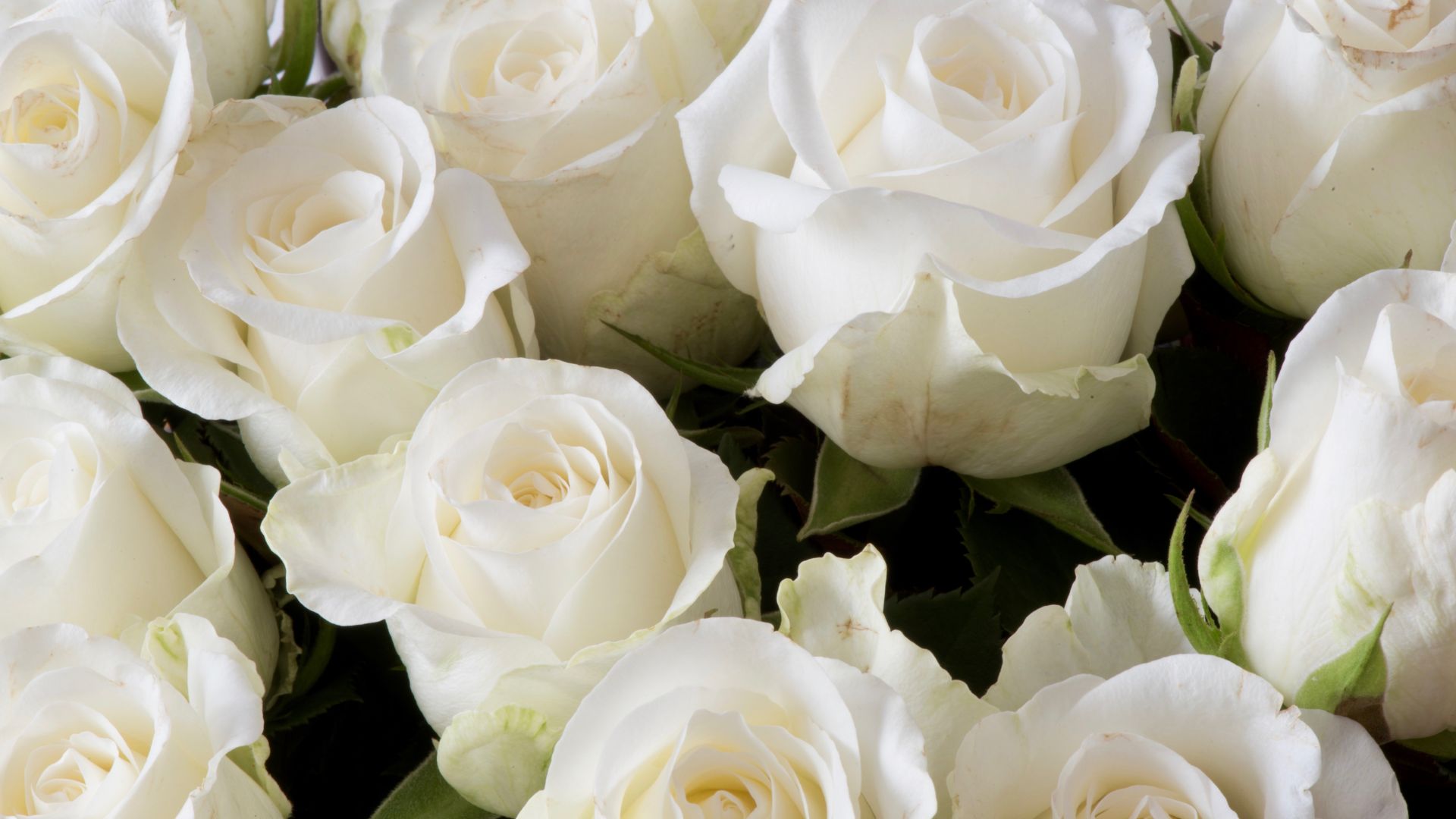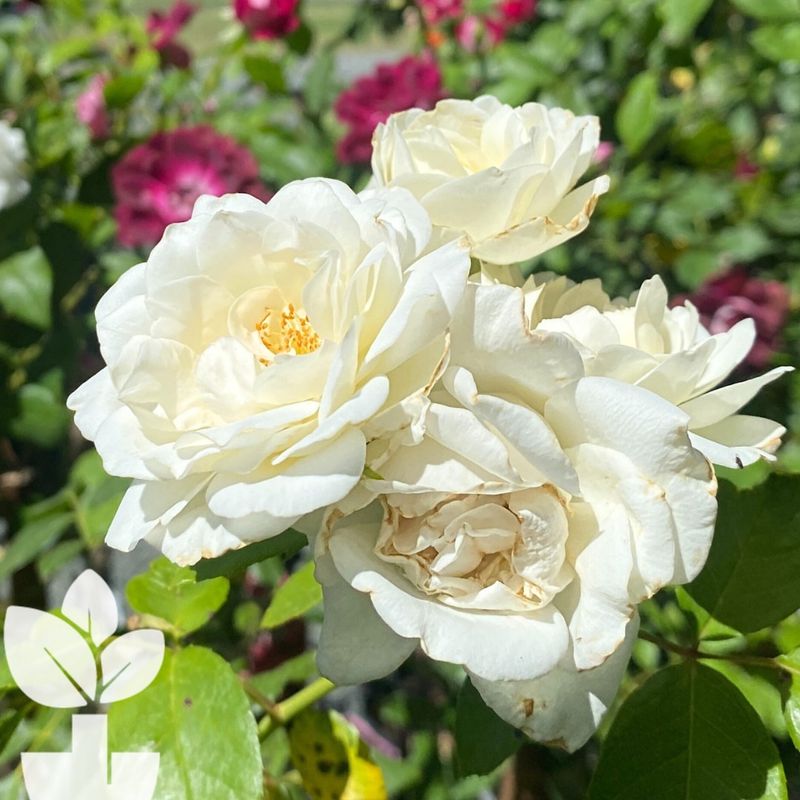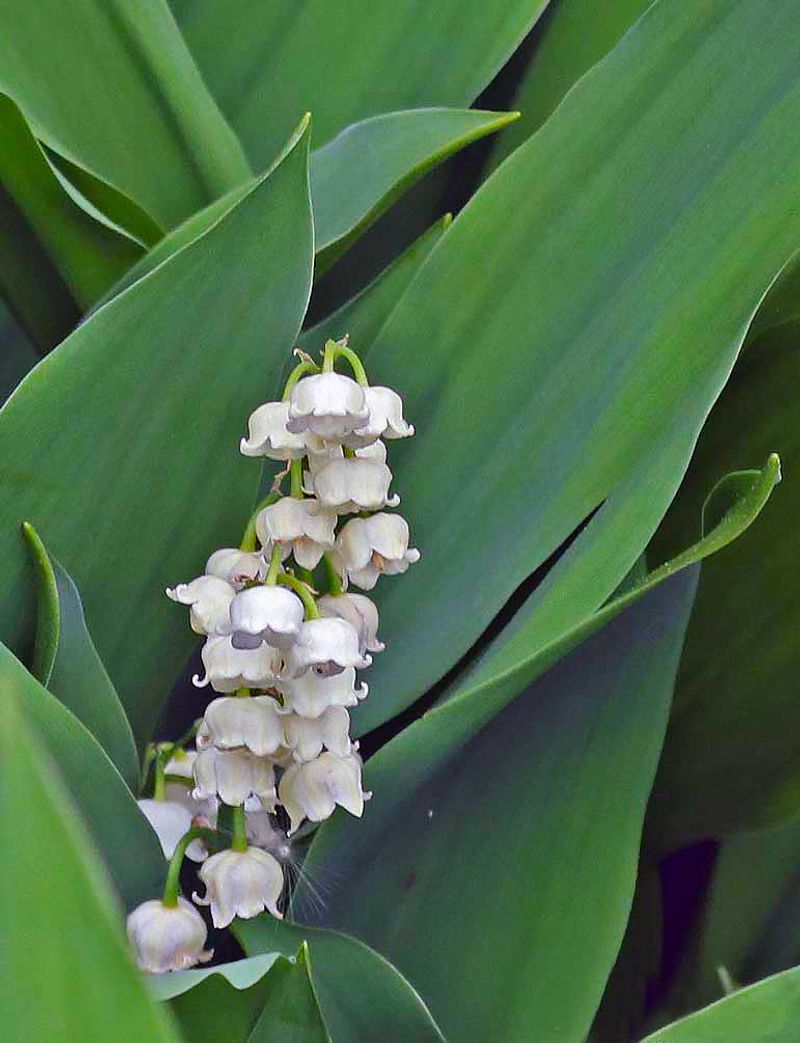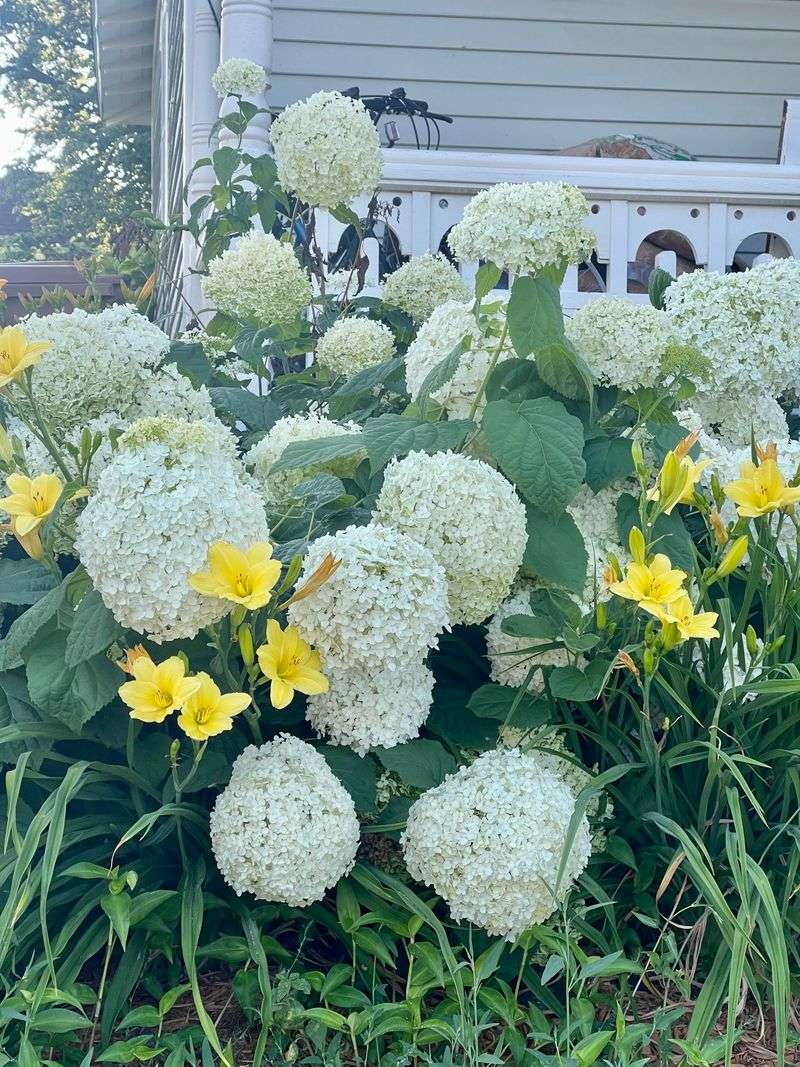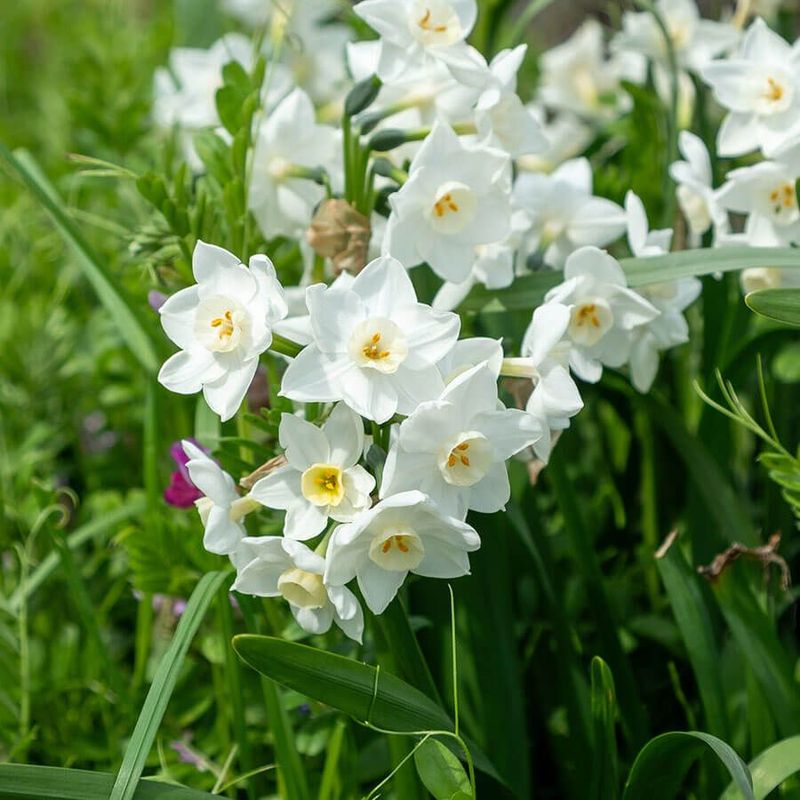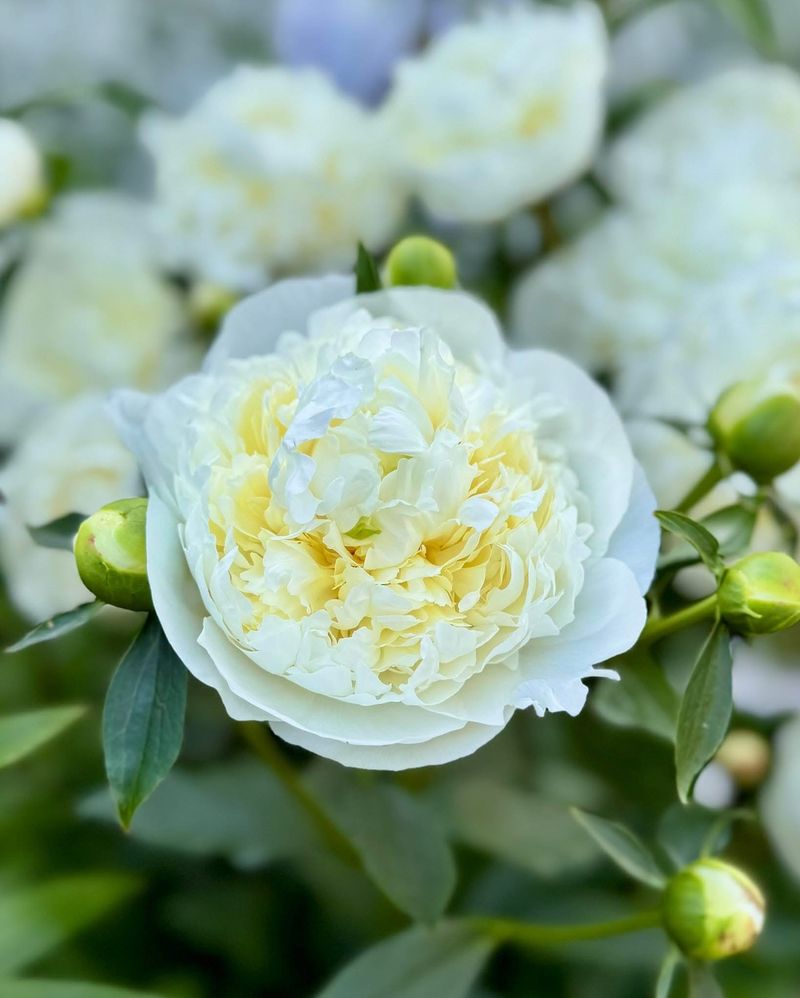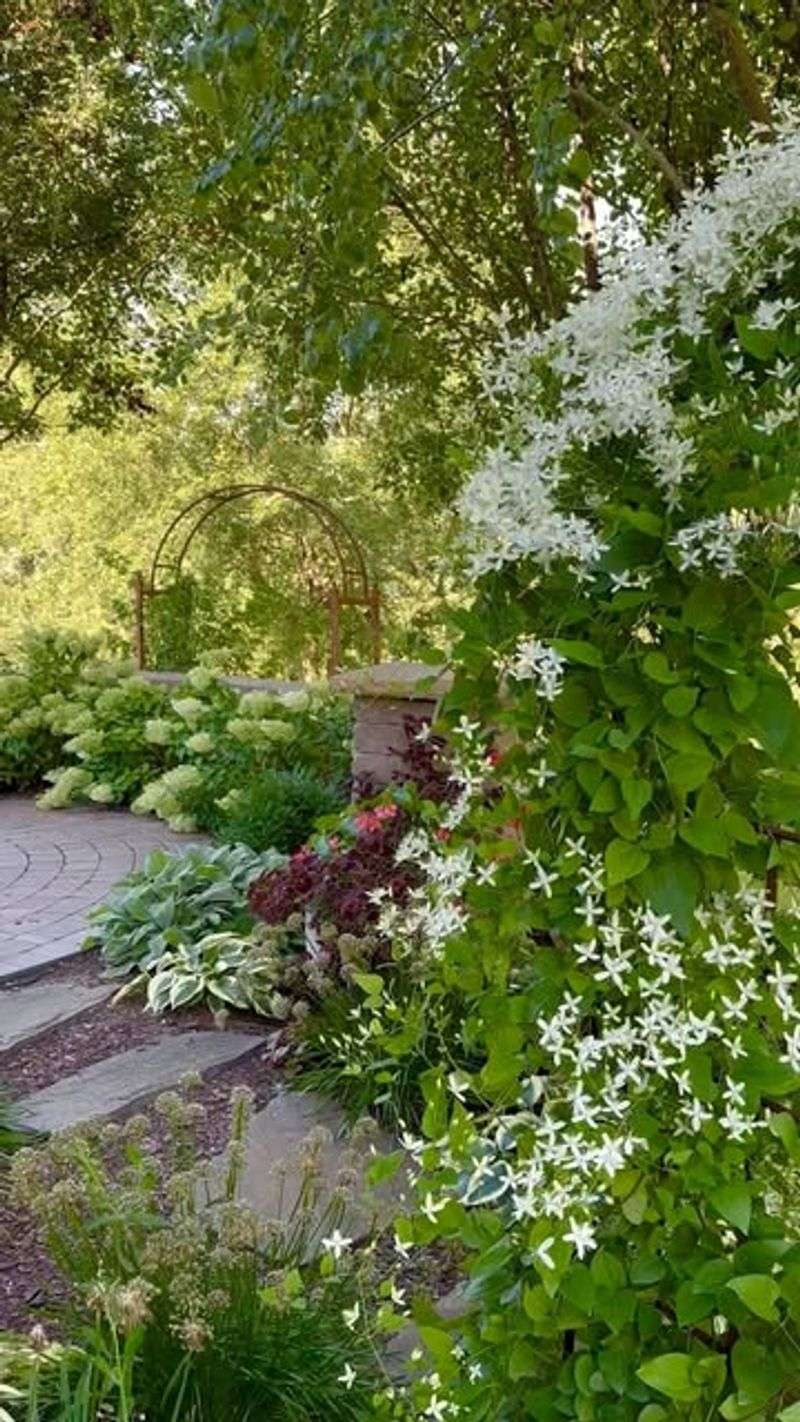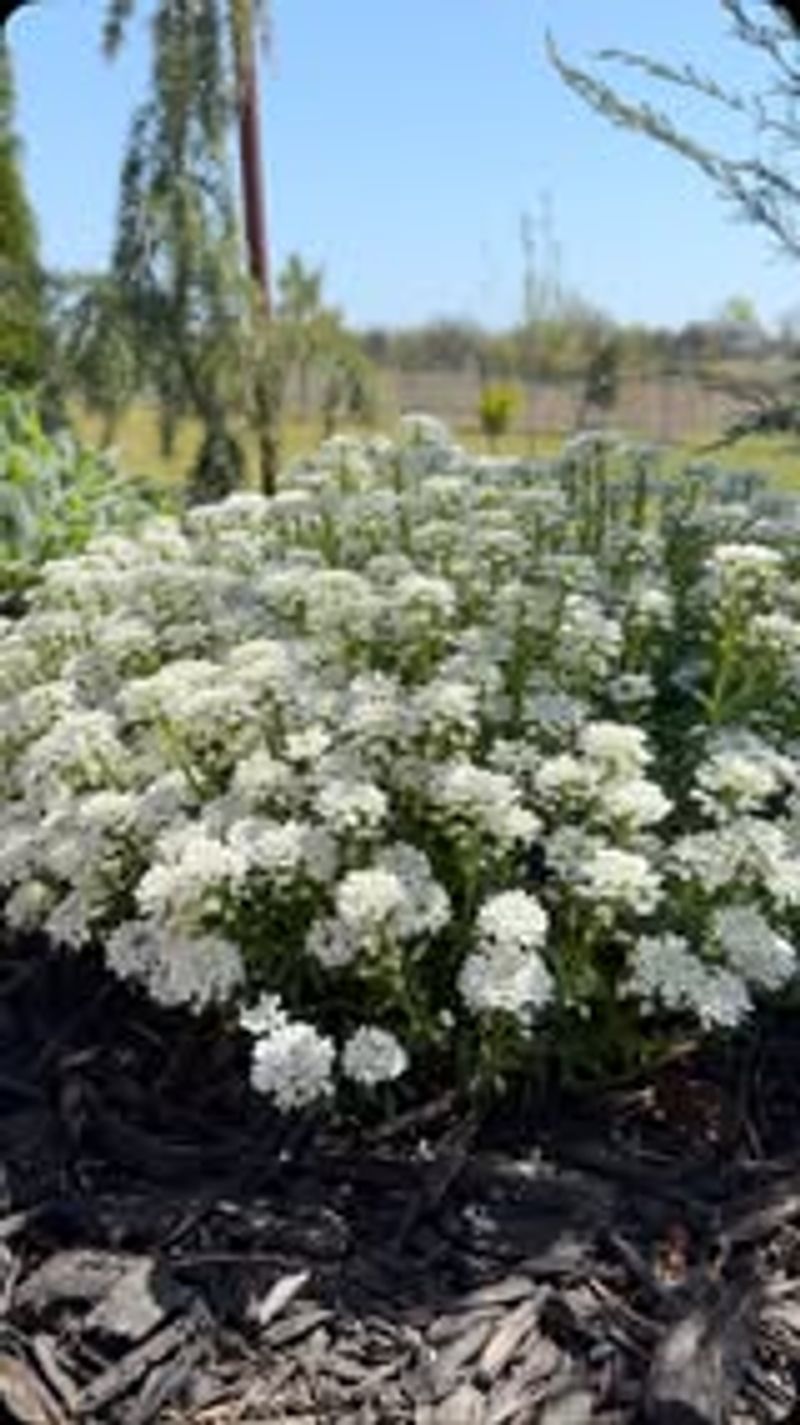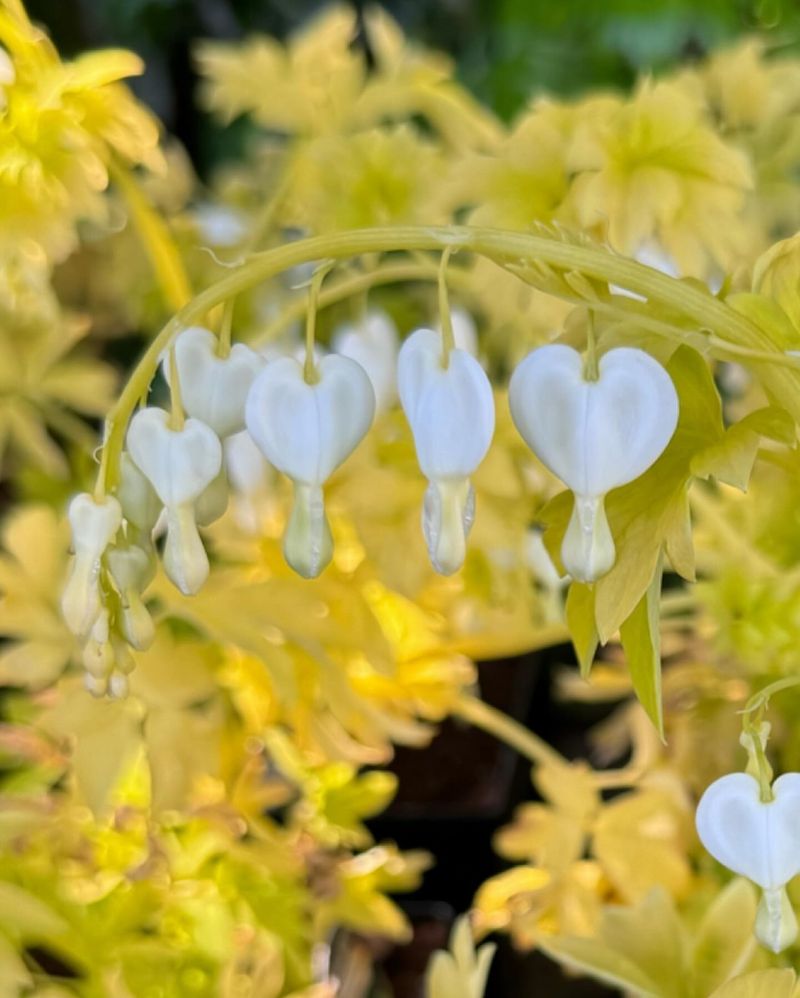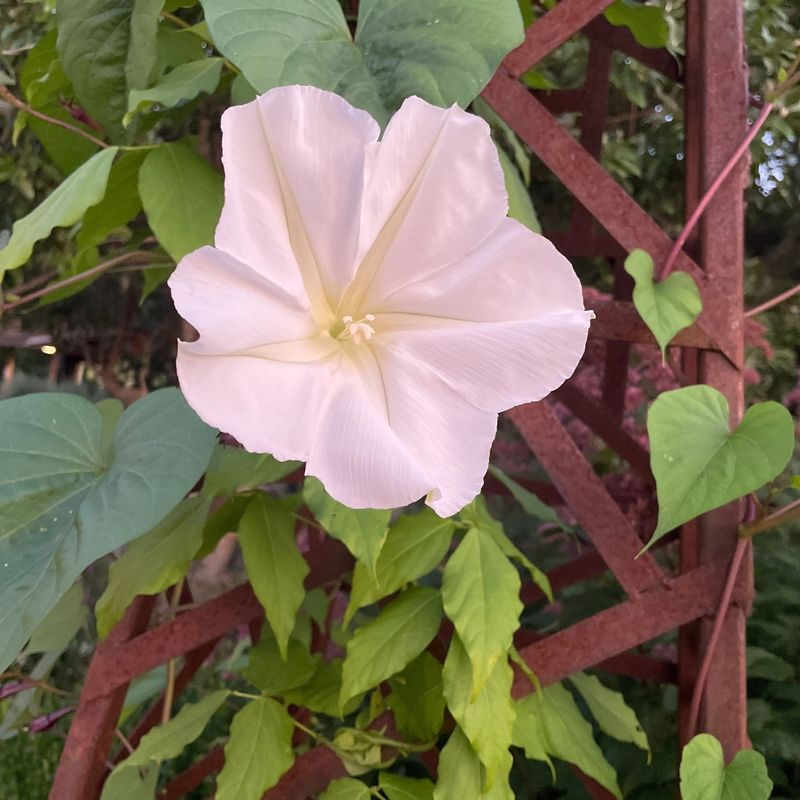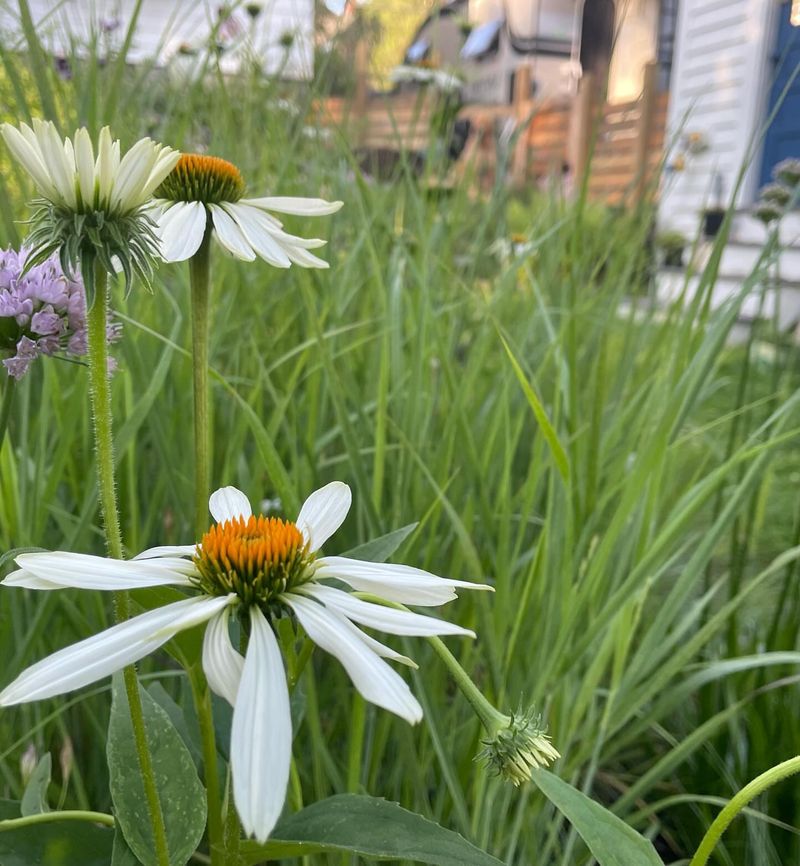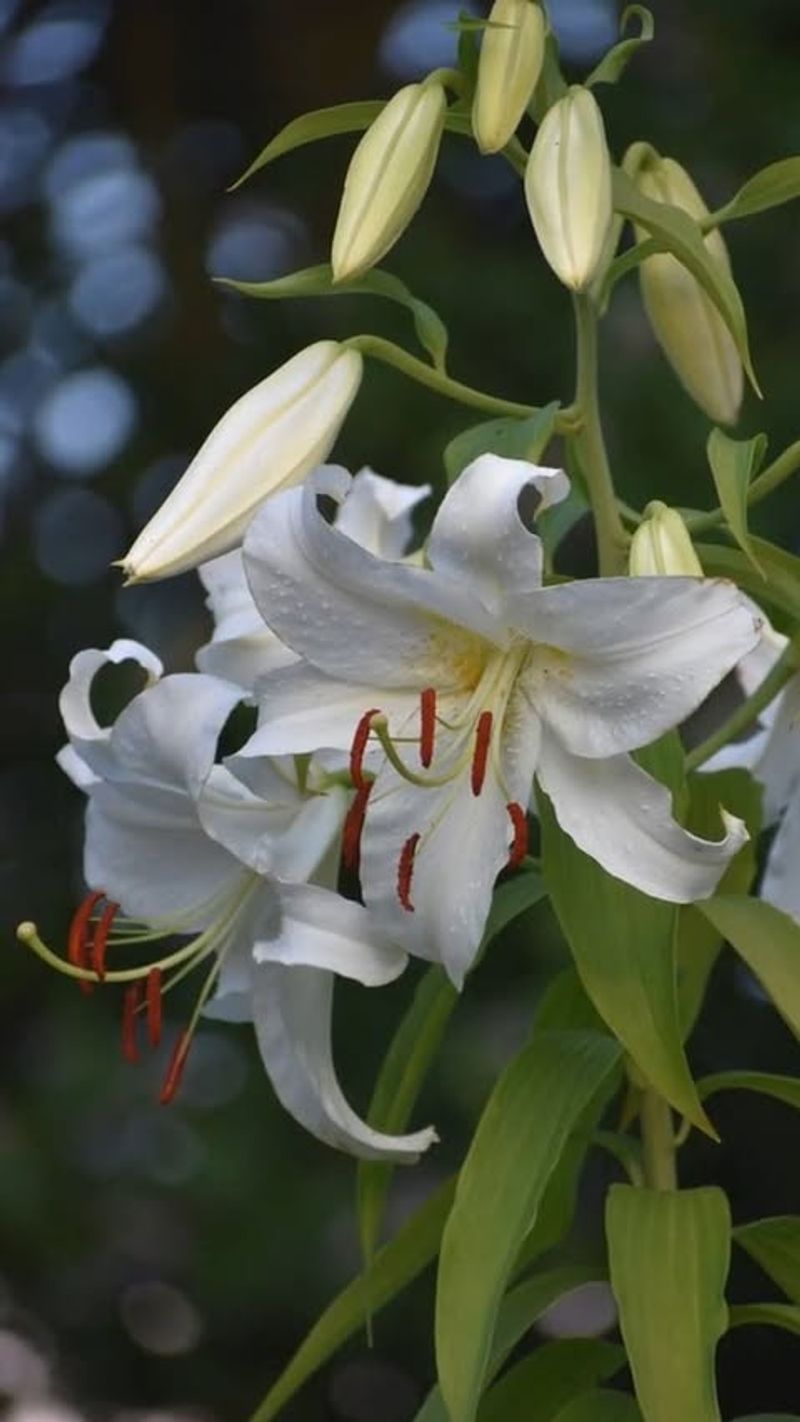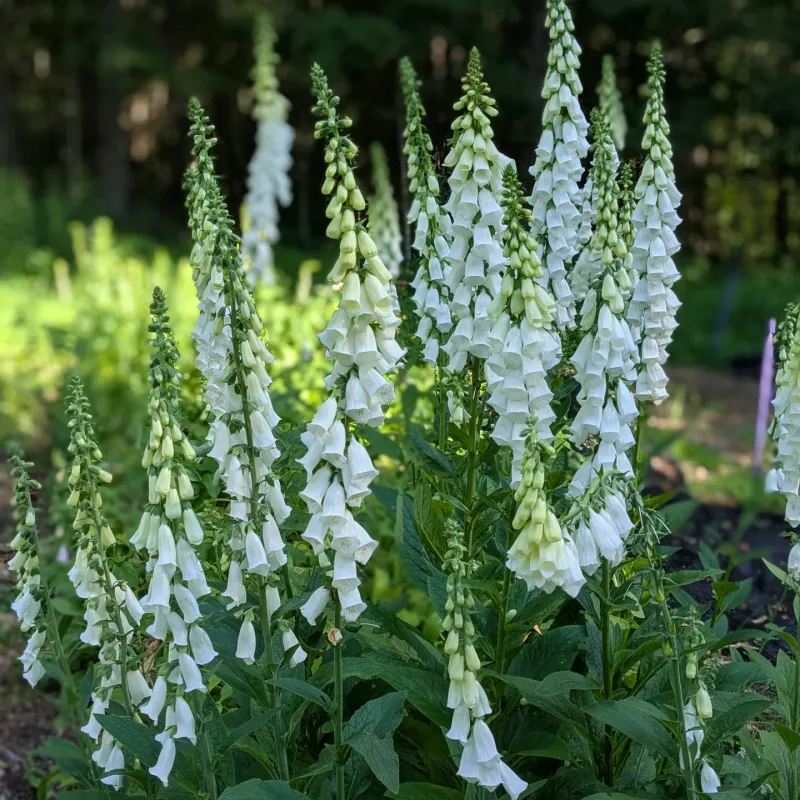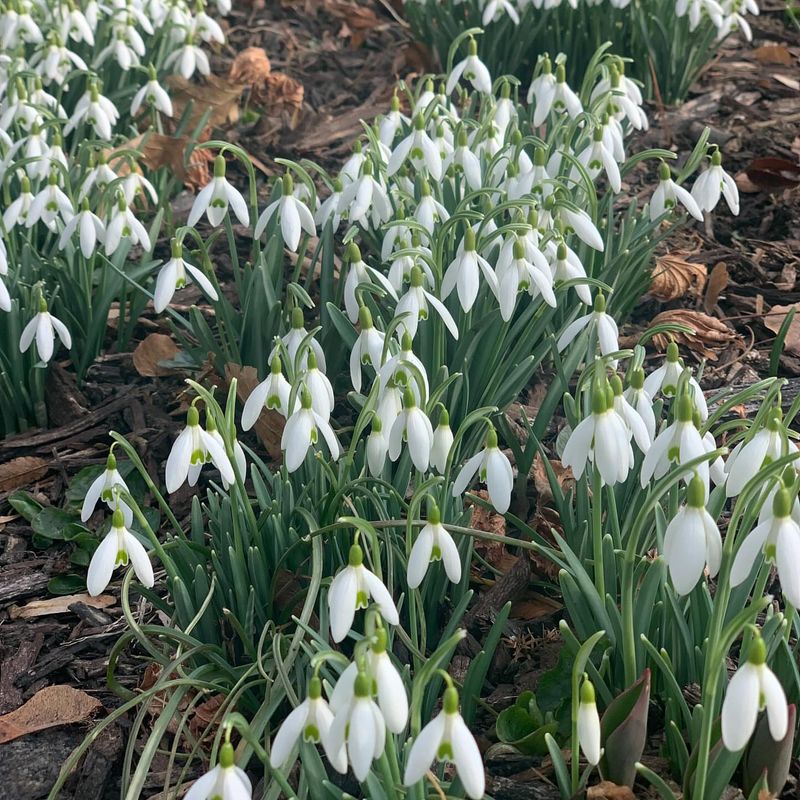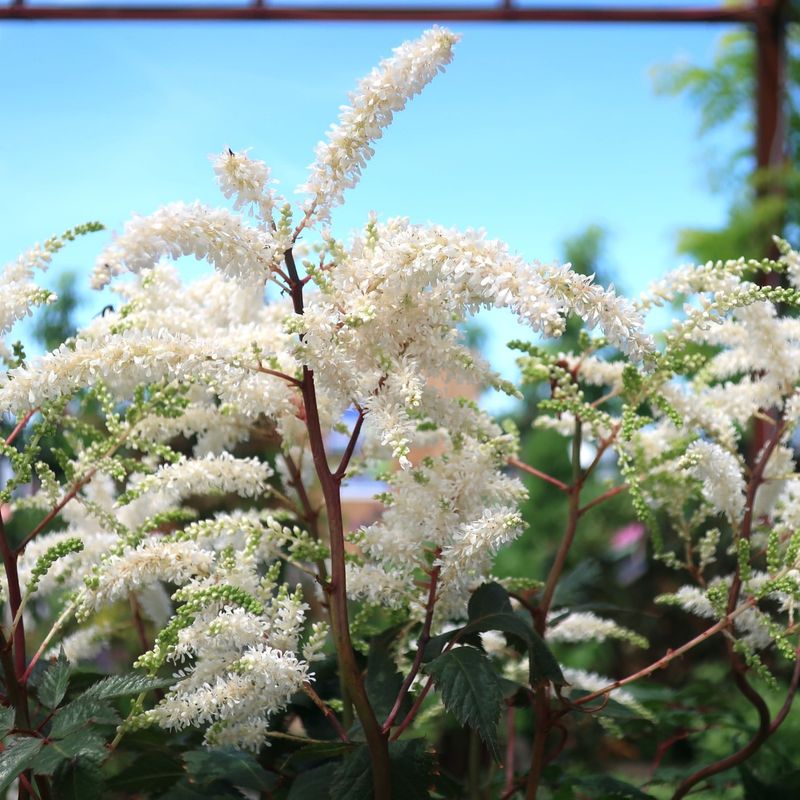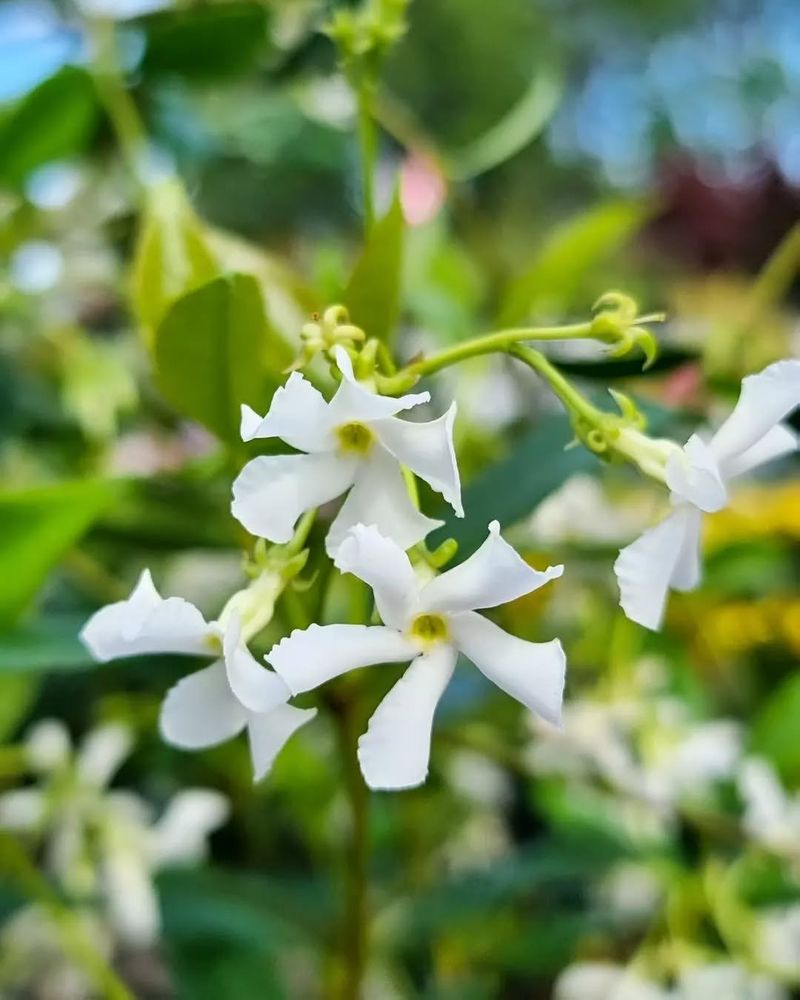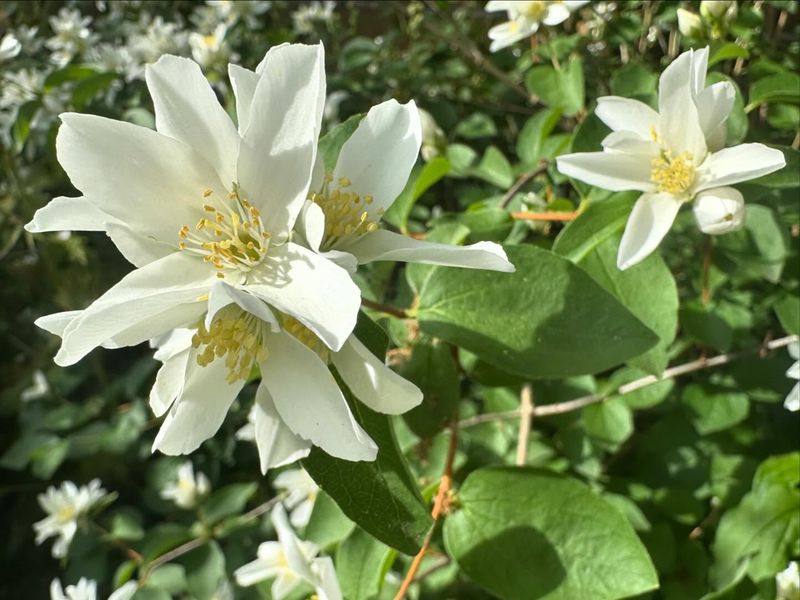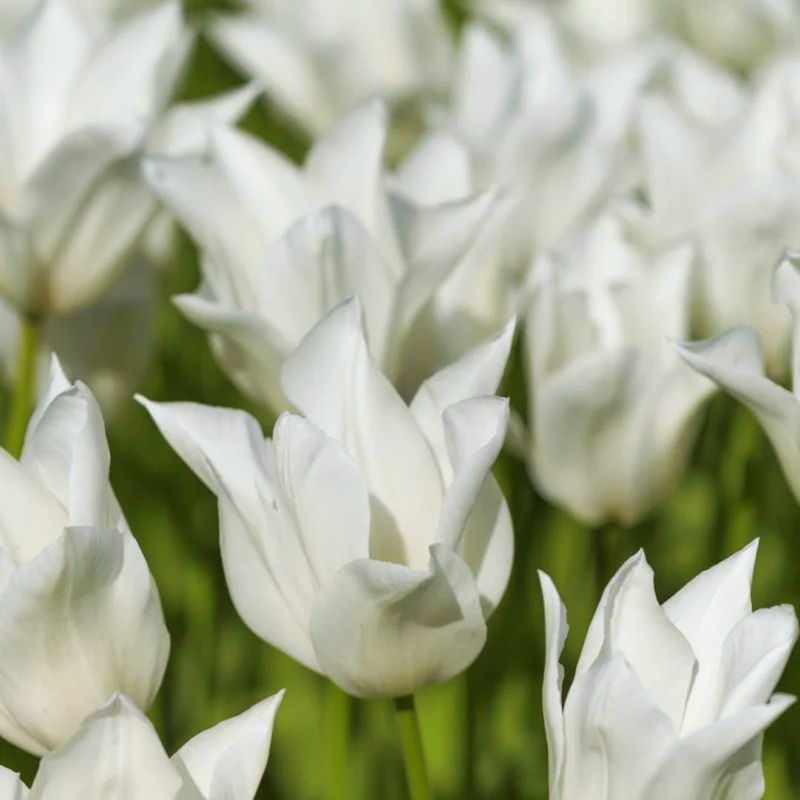White flowers have a graceful charm that quietly transforms a garden. They bring a sense of calm and elegance, whether nestled in wild cottage borders or lined up in structured formal designs. Their simplicity offers a soft balance that lets other colors shine.
These crisp blooms work beautifully across styles—classic, modern, or somewhere in between. They reflect moonlight at night and brighten up corners during the day. With their neutral beauty, they give any space a polished, thoughtful feel.
Whether you’re after timeless sophistication or dreamy romance, white flowers deliver it effortlessly. From garden beds to patio pots, these 18 varieties can help you craft that picture-perfect retreat you’ve always imagined.
1. Shasta Daisy
Growing in neat clumps that stay tidy all season, these bright white blooms with sunny yellow centers bring cheerful elegance to garden borders. They’re remarkably unfussy about soil conditions.
I’ve found they look especially striking when planted in groups of five or more, creating drifts of white that catch the evening light beautifully. Their sturdy stems rarely need staking.
For the most impressive blooms, divide the plants every three years in early spring. They pair wonderfully with lavender and ornamental grasses for a relaxed but refined garden vignette.
2. White Roses
Nothing says classic garden quite like white roses. The varieties available today offer improved disease resistance without sacrificing that quintessential rose fragrance that draws you in from across the garden.
My ‘Iceberg’ floribundas have been surprisingly low-maintenance compared to other roses I’ve grown. They flower repeatedly from early summer until frost, requiring minimal fussing.
Plant them where you can appreciate their scent—near patios or along walkways. Morning sun with afternoon shade helps preserve the pristine white petals, preventing that disappointing brown edge that can develop in harsh conditions.
3. Lily Of The Valley
Those tiny bell-shaped flowers create a carpet of sweetness in shady spots where other plants struggle. The fragrance is incomparable—delicate yet distinct enough to notice from several feet away.
Once established, they’ll spread gradually through underground rhizomes, creating larger colonies each year. I’ve used them to line a north-facing garden path, where they thrive without direct sunlight.
Consider their spreading nature when planting; they make excellent ground cover beneath trees but might overwhelm delicate neighbors. The glossy green leaves remain attractive long after the spring blooming period ends.
4. White Hydrangea
Few plants transform a garden corner quite like hydrangeas. The large, rounded flower heads create instant impact, even in a young garden that hasn’t fully matured.
My ‘Annabelle’ hydrangea starts blooming green in early summer, transitions to pure white, then ages to a lovely antique parchment color in fall. This natural progression adds subtle dimension to the garden over months.
Morning sun with afternoon protection keeps the flowers looking their best. A layer of mulch helps maintain the consistent soil moisture these plants prefer, especially during the first few years after planting.
5. Paperwhite Narcissus
Early bloomers that signal winter’s end, paperwhites bring fragrance when the garden is otherwise quiet. Unlike many bulbs, they don’t require pre-chilling to perform well in milder climates.
I’ve naturalized mine in a grassy area beneath deciduous trees, where they receive plenty of sunlight before the tree canopy leafs out. By the time the trees cast deep shade, paperwhites have finished their show and are storing energy for next year.
Plant them in fall, about 5 inches deep and 6 inches apart. The narrow, upright foliage doesn’t create the messy aftermath that larger daffodils sometimes do.
6. White Peony
Generations of gardeners have treasured peonies for their combination of easy care and spectacular blooms. The white varieties have a particular luminosity that seems to glow at dusk.
My ‘Duchesse de Nemours’ has outlived several garden redesigns over twenty years. The double flowers have the added benefit of a light lemony fragrance that’s never overwhelming, just pleasantly noticeable when you pass by.
Plant them in fall, making sure the eyes (growth buds) are no deeper than 2 inches below soil level. Too deep, and they’ll grow beautifully but refuse to flower—a mistake I made with my first peonies.
7. Sweet Autumn Clematis
Late summer gardens often need a refresh, and that’s when this vigorous climber steps in. Thousands of small, star-shaped flowers cover the vines, creating a frothy white display that’s especially magical in evening light.
Unlike spring-blooming clematis, this variety flowers on new growth, so you can cut it back hard in late winter without losing blooms. I’ve trained mine along a garden fence that needed disguising.
The light vanilla fragrance intensifies at dusk, making it perfect near seating areas used in the evening. Just be mindful of its vigorous nature—regular pruning keeps it from overwhelming neighboring plants.
8. Candytuft
Low-growing and evergreen in many climates, candytuft creates neat mounds that work beautifully at the front of borders or spilling over stone walls. The crisp white flowers appear in profusion during spring.
After the main bloom period ends, a light shearing encourages both tidier growth and occasional rebloom. My oldest plants are approaching ten years and still perform reliably with minimal care.
Excellent drainage is essential for long-term success. I’ve lost plants in heavy clay but found they thrive when planted on slight slopes or in raised beds where water doesn’t linger around their roots.
9. White Bleeding Heart
The arching stems lined with heart-shaped flowers bring a touch of woodland elegance to shady garden corners. Unlike the common pink variety, the white form has a more subtle, refined presence.
Morning sun followed by afternoon shade keeps the plants looking fresh throughout their spring blooming period. After flowering, the fern-like foliage continues providing texture until mid-summer, when the plants typically go dormant.
I’ve interplanted mine with late-emerging perennials like hostas, which fill the space just as the bleeding hearts begin to fade. This succession planting keeps the garden looking full all season without requiring additional square footage.
10. Moonflower
For evening gardens, nothing compares to the drama of moonflowers unfurling at dusk. The large, trumpet-shaped blooms open in a matter of minutes as daylight fades, releasing a sweet fragrance that carries across the garden.
Growing as annual vines in most climates, they quickly reach 10-15 feet when given support to climb. I’ve grown them on a simple tripod of bamboo poles near our patio, where we can watch the nightly opening show.
Nick the hard seeds and soak overnight before planting to improve germination. In shorter growing seasons, start them indoors 4-6 weeks before your last frost date.
11. White Coneflower
The white form of this native prairie plant brings the same durability as its purple cousins but with a cleaner look that fits more easily into formal designs. The daisy-like flowers with their distinctive central cones last for weeks.
Drought tolerance makes them perfect for sunny spots that don’t receive regular irrigation. After three years in my garden, they’ve needed no supplemental water once established, even during summer dry spells.
Leave the seedheads standing through fall and winter to feed finches and other small birds. The dark cones create interesting structural elements in the winter garden, especially when frosted or dusted with snow.
12. Casa Blanca Lily
Towering stems topped with enormous fragrant blooms make these lilies the aristocrats of the summer garden. Their pure white petals curve gracefully backward, revealing prominent stamens dusted with rusty orange pollen.
Plant the bulbs in groups of at least three for the most impressive display. I’ve found they perform best with morning sun and afternoon protection, which helps preserve the pristine white color longer.
Consider their height when planning—most reach 3-4 feet and may need inconspicuous staking to prevent toppling during summer storms. The fragrance intensifies in the evening, making them ideal near patios or windows that are open during summer nights.
13. White Foxglove
The tall spires of tubular flowers bring vertical architecture to partially shaded borders. The white form has a luminous quality that seems to glow in woodland settings or during the evening hours.
Most varieties are biennial, forming leafy rosettes the first year and flowering the second. I’ve found they self-seed politely when happy, creating sustainable colonies without becoming invasive.
Allow spent flower stalks to remain until seeds have ripened if you want volunteer seedlings. The lower leaves can look tattered by midsummer, so I often plant lower-growing perennials in front to mask this natural aging process.
14. Snowdrops
Often blooming while snow still covers the ground, these diminutive bulbs announce spring’s approach with nodding white flowers. Their small size belies their toughness—they reliably push through frozen soil year after year.
Plant them in fall, placing them in drifts rather than straight lines for a more natural appearance. Over time, they’ll multiply to form impressive colonies that require no special care.
I’ve naturalized mine beneath deciduous trees and shrubs where they receive plenty of sunlight during their early spring blooming period before the canopy leafs out. The foliage yellows and disappears by late spring, making room for later-emerging perennials.
15. White Astilbe
Feathery plumes rise above fern-like foliage, bringing airy texture to shady spots where color options are often limited. The white varieties seem to capture and reflect whatever light filters through tree canopies.
Unlike many shade plants that offer only brief bloom periods, astilbes flower for several weeks in early to midsummer. I’ve used them extensively in a north-facing border that receives only filtered morning light.
Consistent moisture is key to keeping the foliage looking fresh throughout the growing season. A 2-inch layer of compost applied each spring helps retain soil moisture while slowly feeding these light feeders.
16. Star Jasmine
Glossy evergreen leaves provide year-round structure, while the pinwheel-shaped flowers deliver intoxicating fragrance for weeks in late spring to early summer. In mild climates, this versatile plant can be used as a vine, ground cover, or even pruned into a shrub form.
My specimen grows on a trellis near the front door, where visitors can enjoy its sweet scent. The flowers aren’t showy from a distance but reveal their intricate beauty up close.
Growth is moderate—expect about 6-12 inches per year depending on conditions. Regular pinching of the growing tips encourages branching and creates fuller plants with more flowering potential.
17. Mock Orange
For about two weeks in late spring, this old-fashioned shrub covers itself in white blossoms with a citrusy fragrance that carries across the garden. The classic varieties can reach 8-10 feet tall, though newer compact cultivars stay more manageable for smaller spaces.
I’ve placed mine where it can be viewed from inside the house during its spectacular but brief flowering period. After blooming, it becomes an attractive green backdrop for later-flowering perennials.
Prune immediately after flowering by removing about a third of the oldest stems at ground level. This rejuvenation approach maintains the natural fountain-like form while encouraging vigorous new growth for next year’s flower display.
18. White Tulips
Planted in generous drifts, white tulips create a sophisticated spring display that complements any garden style. Unlike brightly colored varieties that sometimes clash with emerging perennial foliage, white harmonizes beautifully with the fresh greens of spring.
Consider layering different varieties that bloom in succession—early single tulips followed by mid-season triumphs and late-flowering lily-flowered types can extend the display for up to six weeks.
In my climate, I treat them as annuals for the best display, planting fresh bulbs each fall. The clean look of white varieties like ‘White Emperor’ or ‘White Triumphator’ brings a refined elegance that more colorful tulips can’t match.

